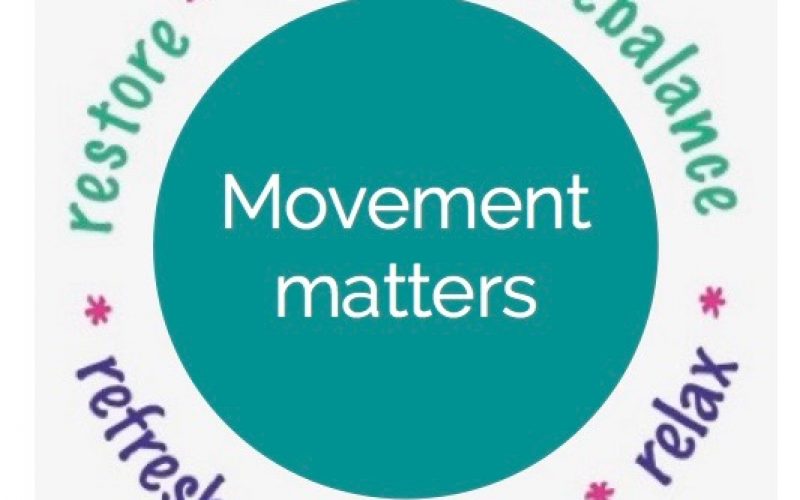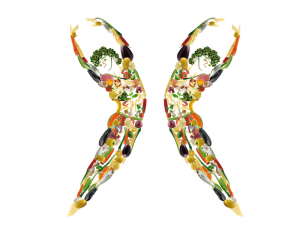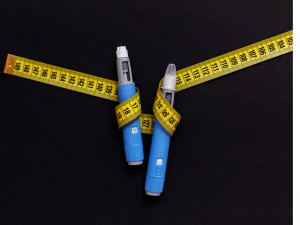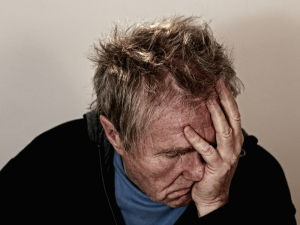Movement matters are the blog sections dedicated to getting you moving. Exercise hacks (*) are 5 -10 minutes offerings of simple home movement or ‘exercise’. Taken from my toolbox of somatic movement, osteopathic practice, Pilates exercise repertoire, personal and clients favourites.
* Life hacks refer to shortcut or methods that increase productivity and efficiency, our exercise hacks are designed to do the same, or just make you feel great.
Neck and shoulder tension
The adult head weighs about 5 kg (11 lbs) about the weight of a bowling ball, it’s perched on a thin flexible pole; our spine, and designed to be weightless if correctly aligned. We are preprogrammed to keep our eyes facing forward on the horizon in standing, this is known as the Frankfort horizontal plane. If our head is not well-balanced our neck will bend and change into funny angles as it strives to remain at the top of our body, this often results in neck and shoulder tension.
No matter what caused it chronic neck or shoulder discomfort has a significant impact on daily life, affecting how we move the whole body in work, exercise or play. The good news is that its possible to reduce neck and shoulder tension at home, just 5 minutes a day can make a difference. It does take a little effort and some regular practice.
Health and safety:
While you are working without the guidance of a teacher home exercise is your responsibility. Do not attem
Preparation: Tips for lying on your back
- For comfort use an exercise mat or folded blanket.
- Lie on your back with knees bent, and your feet flat on the floor. Or with legs relaxed straight
- Support your head with a cushion, folded towel or similar
- Place arms by your side or rest them gently on your lower ribs or abdomen.
Neck awareness Chin Poke/Chin Retractions
Chin Poke or Chin Retractions lying down
- position as above with the back of your head against the floor or use a pillow
- Starting position as above with the back of your head against the floor or use a pillow
- Exhale – lengthen (slide) the back of your neck and gently allow your chin tuck in. Do not lift your head. Repeat 5 times.
- Poke your chin forward keeping the back of your head supported by the floor or pillow. Repeat 5 time
- Put the two things together and repeat 5 more times

Chin Poke or Chin Retractions standing
- Starting position stand with the back of your skull against a wall for support
- Repeat as above keeping your head against the wall
- Repeat 5 times


Now that you are standing let’s look at your shoulders.
Shoulder release 1: North & South, also called scapula elevation/depression.
- Shrug your shoulder towards your ears, feel how this works the shoulder and neck muscles. Slowly (gently) release back down to neutral or where they started.
- Now draw the armpit down towards the waist to pull the shoulders down. Feel how this tightens the muscles of the armpit and ribs.
Tips:
- Let the movement be slow, smooth without any no bouncing
- The movement of the shoulder involves the centre of the body.


Shoulder release 2: East & West, also called scapula retraction/protraction
- Draw the shoulder backwards and feel the muscles at tightening between the shoulder-blade and spine. Notice how your chest opens in the front as you draw your shoulder backwards. The abdominal muscles may even relax in the front. Release back to where you started.
- Now draw the shoulder forward and feel the chest muscles tighten.
- Sense how the muscles between your spine and shoulder-blade lengthen. Release back to where you started – neutral.
Tips:
- The movement of the shoulder involves the centre of the body
- Let the movement be slow, smooth without any no bouncing


Shoulder release 3: Compass, four Points Combined
- Now combine all the movement into a big smooth circle, drawing the shoulders up, back, down and forward.
- Notice whether it more comfortable to go forward or backwards, where the circle becomes squared off, and jumpy or is super smooth
- Try changing direction
- Trying circling one shoulder at a time
- Notice how your neck and jaw respond when you focus on your shoulders
Tips:
- The movement of the shoulder involves the centre of the body
- Let the movement be slow, smooth without any no bouncing

Rhomboid push-ups, aka scapula retraction/protraction in 4-point kneeling
- Starting position: 4 four point kneeling
- Start on your hands and knees, with the heel of the hands under shoulder joints keeping the arms long at the elbows without locking, allowing the wrists to flex. Knees directly under hips and feet relaxed
- Hold position to inhale.
- Exhale to move your mid-back down (shifting the place between your shoulder blades), think of your chest sinking towards the floor, allowing shoulder blades to relax towards the spine.
- Inhale and hold this position
- Exhale and slowly return to starting position, lifting the body up and away from the floor, imagining you could push the floor away from shoulder joints and armpits will help engage the appropriate muscles
Tips:
- Do not round the shoulders or back
- Keep the elbows and back straight throughout
- Try not to push through your shoulders
- Keep head and face in the same alignment, nose and eyebrows looking at the floor

Please note:
In my clinical opinion most people with persistent neck or shoulder discomfort, anything lasting more than a few weeks, usually require treatment. I often need to gently remind my clinical patients and individual Pilates clients that their problem built up over many months or years, and will take time and treatment to resolve.
SaveSave
SaveSave
SaveSave
SaveSave
SaveSave







